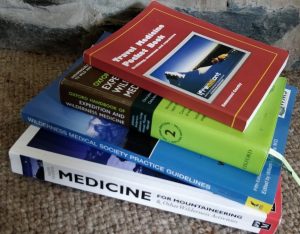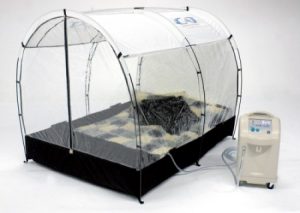Success in the mountains can mean many things – reaching your physical goal e.g. a summit or the completion of a trekking or mountaineering route, enjoying the experience a much as possible and coming away healthy and hopefully even fitter than when you started. As with most things, the key to success at high altitude is preparation. Here are my tips and some general information on how to prepare for high altitude.
Educate Yourself
I recommend learning as much as you can about altitude before you go e.g. how altitude affects our bodies, altitude illness and how to prevent and manage it. My previous blog post might be a good place to start: Basics of High Altitude Physiology. The more knowledge you have, the more you can plan your trip based on evidence that can help you stay safe and succeed. It also enables you to mentally prepare which, when it comes to very high and extreme altitude, often involves anticipating a bit of suffering (type two fun!).
The UIAA website is a fantastic resource for all things mountaineering and high altitude. They publish advice and information papers on a range of topics and I highly recommend this as a place to further your learning. You can also find other useful links on my Resources page.

Tailored Route Planning/Ascent Profiles
When planning your own trip or signing up to a commercial trip, consider the ascent profile carefully and ensure it fits with the widely accepted, evidence based guidance from the Wilderness Medicine Society which states that “above an altitude of 3000m, individuals should not increase the sleeping elevation by more than 500m per day and should include a rest day (i.e. no ascent to higher sleeping elevation) every 3 to 4 days”. (See my previous blog for more details on this.)
This advice is even more relevant if it is your first time to high altitude; be cautious and don’t underestimate the effects of hypoxia (low blood oxygen levels). For people who have been to altitude before, the evidence suggests that assuming a sensible ascent rate, the best predictor of how someone will acclimatise in the future, is their past performance at altitude (predominantly due to their genetic predisposition). In real terms this means that if you took longer to acclimatise than your peers on your last trip, it is likely that this will hold true in the future, so plan to spend longer on your route to the high altitudes to ensure you give your body enough time to adapt. However, this is by no means an exact science; there is variability in response even for the same person over different trips. There may also be other factors influencing your acclimatisation on a given trip, such as those in the following list, but learning from your own previous experience is key.

Fitness
The evidence shows that improved fitness does not lower your risk of altitude illness. Most people have heard of the typical situation where the fittest group members rush off in front on the first day or two of a trek and then become unwell once they reach the camp. This is thought to be due to the high intensity of their exertion. The evidence around this isn’t completely clear yet so it’s best for everyone to be sensible and take it slow in the first day or two while acclimatising, regardless of your fitness level. Having said all this, increased cardiovascular fitness is still definitely beneficial overall. The fitter you are ahead of your trip, the higher the chance you will succeed at your physical challenge and you’ll probably enjoy it more too as your mental and physical exertion levels will be lower.
Body Weight
I’m not suggesting you need the body of an Olympic long distance runner to stay safe at high altitude, but evidence suggests that obesity (BMI >30) increases your chances of altitude illness. Carrying extra body weight also increases exertion and could lower your chances of success (and enjoyment!) of your trip. There is little point shaving 100g off the contents of your rucksack if you’re carrying an extra 6kg around your waist.
Optimise Underlying Medical Conditions
It is important to ensure your health is as good as possible prior to going to high altitude. This is especially important if you have any long-term (chronic) health conditions such as asthma, diabetes, epilepsy etc. With more and more older people heading up to high altitude and participating in expeditions, this subject is becoming more significant than ever. Some pre-existing conditions such as severe chronic obstructive pulmonary disease and pulmonary hypertension put you at higher risk of altitude illness. However, many of the common conditions such as hypertension (high blood pressure), diabetes, coronary artery disease, mild chronic obstructive pulmonary disease do not appear to increase the chances of high-altitude illness. Having said this it is important to note that the physical stress of altitude and exertion may exacerbate these pre-existing conditions and could have serious consequences.
I advise seeing your GP or specialist for a review of your chronic health condition before your trip to get advice about risks and how to reduce them. I also recommend not changing or starting new medication close to your trip start date, do things earlier to see if it works for you or not. See my first blog post for more tips on medical optimisation.
Hypoxic Pre-conditioning
Pre-acclimatisation by hypoxic pre-conditioning is becoming a popular topic, especially for the ‘cash rich, time poor’ mountaineer. Several companies are now running programmes enabling clients to pre-acclimatise before an expedition by spending time in hypoxic chambers in a lab or in your own home. There are two ways to undergo hypoxic pre-conditioning: Hypobaric Hypoxia (low pressure, low oxygen, like real high altitude) – this has the strongest evidence of some benefit for pre-acclimatisation, and Normobaric Hypoxia (normal pressure, low oxygen), which has conflicting evidence regarding its potential benefits for pre-acclimatization. Despite the increasing evidence base around hypoxic pre-conditioning, currently there is not enough evidence to give definitive advice on specific protocols to follow. In 2014 the Wilderness Medicine Society expert panel recommended “consideration of these approaches” and thought that extended duration of hypoxia >8 hours for >7 days as close as possible to the planned altitude gain is likely to provide the most benefit.

Optimising Your Health At Altitude
Once you’re at high altitude and you’re still ascending, it is important to get the basics right to aid your acclimatization and reduce the risk of problems. Ensure you’re getting as much sleep as possible. Often this is tricky with early Alpine starts and noisy mountain huts or camps, so take earplugs and seize any opportunity for a nap.
Avoid picking up infections/illnesses that other people may have; even a minor chest infection could increase your chances of altitude illness and ruin a trip. Ensure good hand hygiene, especially around meal times and keep a wide berth of anyone coughing or looking snotty. Keep hydrated – dehydration does not itself increase the risk of altitude illness, but it can mimic many symptoms of acute mountain sickness (AMS) such as headache and tiredness and it is proven to reduce performance. Dehydration develops quicker at high altitude than around sea level. To keep things simple, drink at least 3 litres every 24 hours, aim for clear to straw-coloured urine at normal volumes for you and drink if you’re thirsty. Avoid alcohol.
Drugs for Altitude
Acetazolamide (Diamox) is a drug commonly used to aid acclimatize and prevent altitude illness. It’s one of the topics I get asked about most frequently by clients before an expedition. A future blog post will cover how this drug works, the current evidence about who might benefit from using it and it’s advantages and disadvantages. It will also cover other drugs used in the prevention and treatment of altitude illness.
